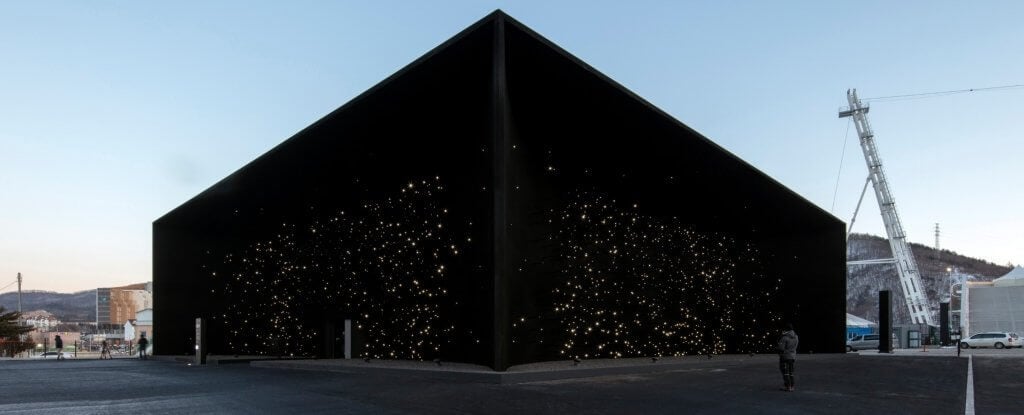
In the South Korean city of Pyeongchang came the black building in history. In the truest sense of the expression. Architect Asif Khan has been commissioned to create on the occasion of the winter Olympic games in 2018, the new building Hyundai Pavilion with parabolic walls with a height of 10 meters and a length of 35 meters and to cover it one of the darkest of known substances Vantablack VBx 2.
Substance Vantablack VBx 2, absorbing 99 percent of the visible light, produced by the company NanoSystems. Covered with a substance structure just looks unreal. Interestingly, inside the building is white, creating a fantastic contrast.
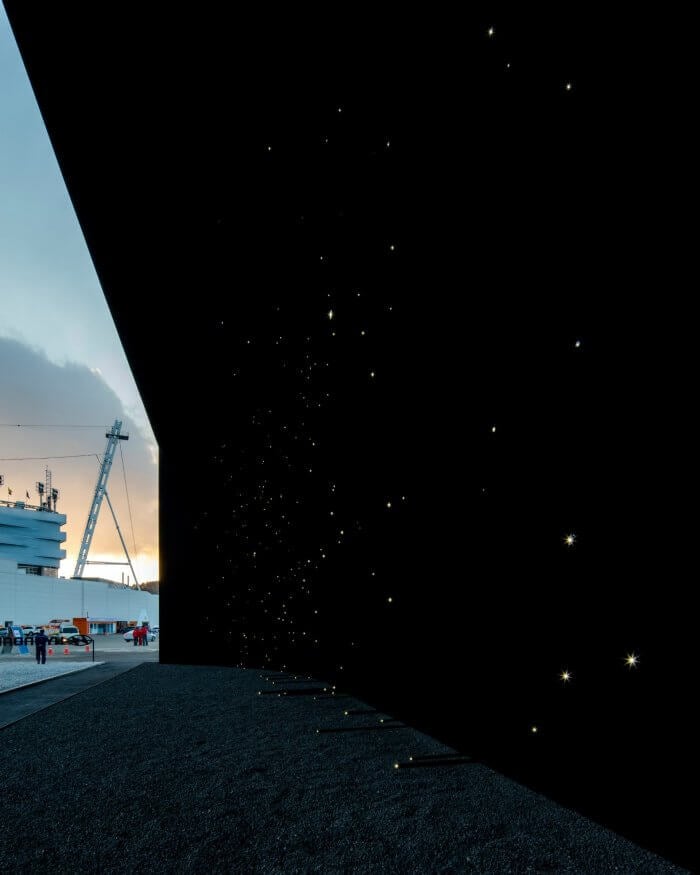
Despite the fact that Vantablack is really impressive, the builders had a lot of trouble to put it on the surface of the building. Recall, that in itself is a substance Vantablack consists of carbon nanotrubok. Millions of carbon nanotubes, vertically aligned next to each other. Each nanotube has a diameter of about 20 nanometers (approximately 3500 times less than the diameter of a human hair) and the length from 14 to 50 microns (1 micron = 0.001 millimeter). When light strikes the nanotubes, the photons are effectively trapped in their structure, begin to randomly move around inside and eventually disappear, turning into heat.
The original coating method of a material Vantablack nanotubes means literally “growing” them on the material by chemical vapor deposition. The result is a substance that can absorb 99.6 percent of the total visible, infrared and ultraviolet light.
Company Surrey NanoSystems has developed a spray version of Vantablack, which is able to block only visible light, but in which the nanotubes are arranged randomly and not structurally vertically, as in the original substance. Paint VBx 2, in turn, does not use nanotubes, and can be used for commercial purposes, because its production is much easier. The finished product just covered the Hyundai Pavilion.
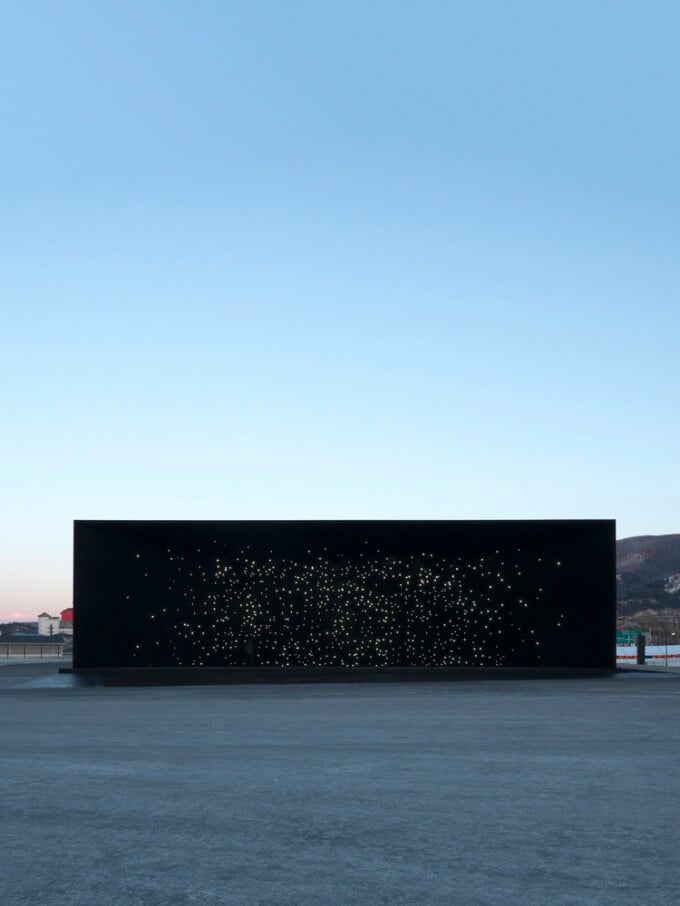
Under certain lighting conditions it seems that the three-dimensionality of the building disappears. A wall-mounted metal rods, the ends of which extend outwards and create the effect of stars shining against a background of darkness.
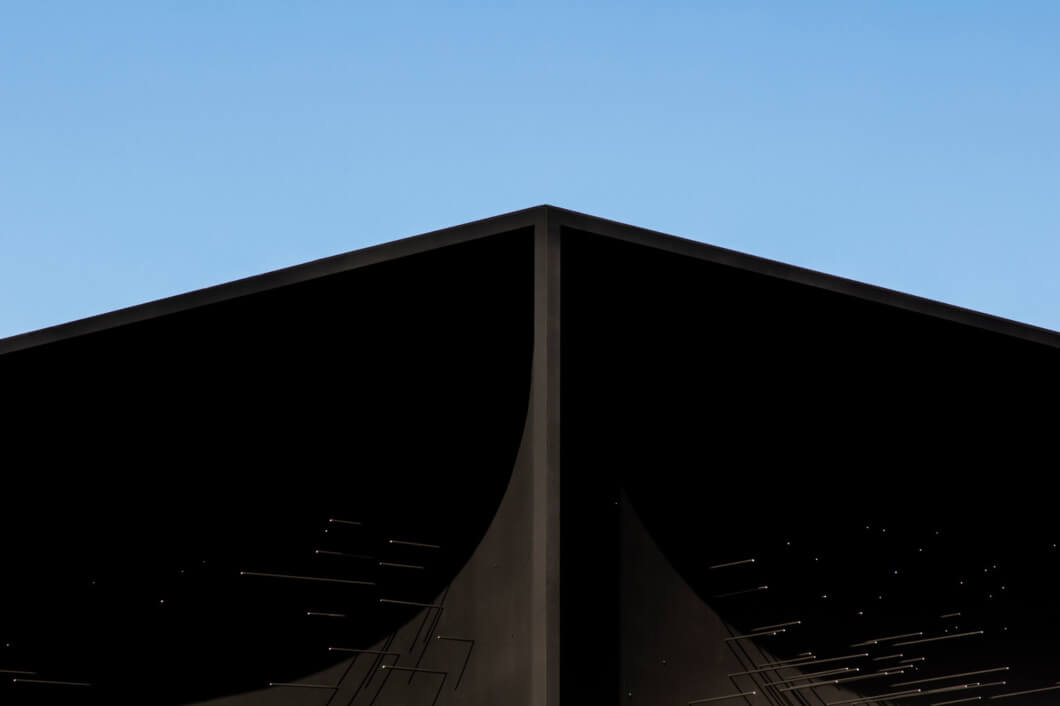
“From a distance the design is similar to the view from the window facing the open space. When approaching it this feeling will grow, and at the entrance to the building feels like you swallowed a cloud of darkness,” says Khan.
But as noted above, the interior of the building is completely different from the exterior. Inside, everything glows with bright light, and installation in the form of stone streams, for which every minute to the center of the composition of run 25 000 drops of water, is a perfect place for relaxation, meditation, or just admiring the beauty. Built-in installation of the tactile sensors allow visitors to interact with it, changing the rhythm of the movement and collision of the droplets among themselves. According to the designer, the composition represents the city, visible from space.
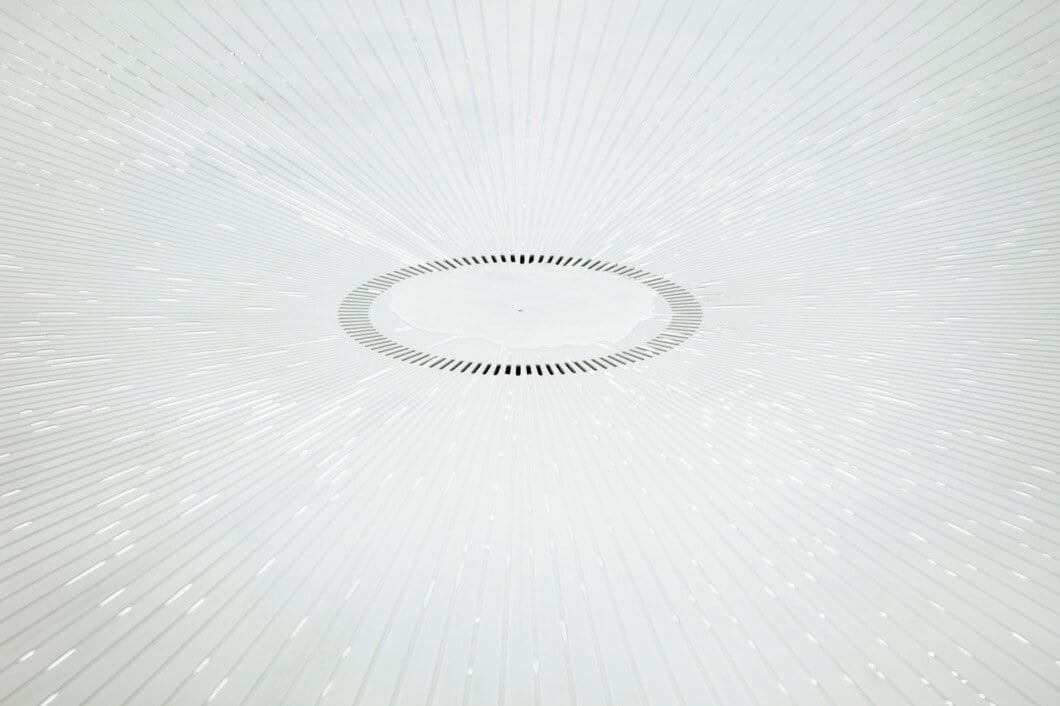
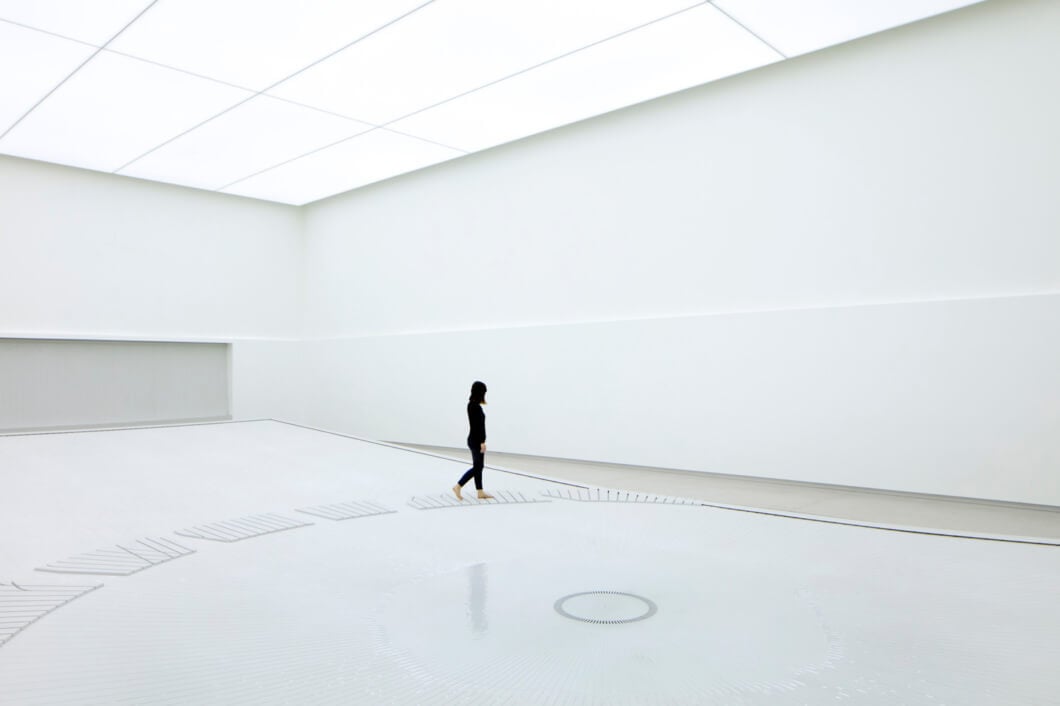
The pavilion is made to order Hyundai Motor, is part of a project to improve the mobility of people. The second project Hyundai — a car with hydrogen fuel cells, both ideas reflect a successful future. The black facade represents the vastness of the Universe, and water installation — hydrogen molecules which collide with each other, as in a new company car.

“Visitors to our booth, once inside the building, are surprised light and bright space, as well as installation, located at its centre. Once your eyes adjust to the bright room, you can feel for a moment that those who run the channels drops have a lot in common with the stars,” says Khan.
“I wanted to move from cosmic dimensions to the size of water droplets in several steps. Drops contain the same hydrogen that stars with the very inception of the Universe.”
The pavilion has opened for everyone to visit.
In South Korea, built the black building in the world
Nikolai Khizhnyak